10 Key Live Chat Metrics to Measure and Optimize Real-Time Customer Engagement
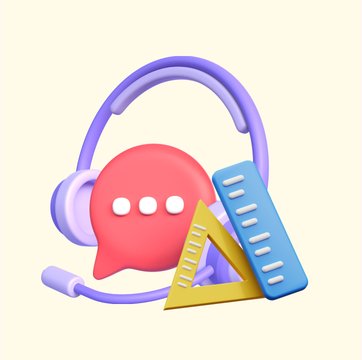
Table of contents
In today’s world, live chat plays a pivotal role in enabling businesses to provide instantaneous support to customers.
It fosters real-time interactions and makes support more direct, personal, and accessible. However, to make the most out of live chat as a customer communication channel, businesses really need to know (in quantifiable terms) how it impacts their customers’ experience.
This is where tracking, measuring, and analyzing live chat metrics become important.
In this blog, we look at 10 key live chat metrics that can help you elevate agent performance and the quality of support you provide.
Table of Contents
- What are Live Chat Metrics?
- The Role of Live Chat Metrics in Increasing Customer Engagement
- The Importance of Measuring Live Chat Metrics
- 10 Key Live Chat Metrics to Measure in 2025
- Wrapping Up
What are Live Chat Metrics?
Live chat metrics are specific data points or measures used to evaluate the efficiency, effectiveness, and overall quality of a live chat service. These metrics help businesses monitor live chat performance, identify areas of improvement, and enhance the customer experience.
For instance, First Contact Resolution (FCR) Rate is a live chat metric that is used to measure the percentage of queries or complaints that are resolved during the customer’s first contact with your support team without needing any follow-up, which is made easier through a website chat widget. A good FCR rate is known to increase customer satisfaction.
Let’s take an example. Imagine you’ve recently purchased a new smart thermostat for your home. However, once it’s installed, you find that it isn’t connecting to your WiFi network. You reach out to the company’s customer service team via live chat.
Within minutes, a support agent responds. You explain the issue, and the agent guides you through several troubleshooting steps. You’re able to successfully connect the thermostat to your WiFi within the same chat session. There’s no need for a follow-up email, another chat, or a phone call. The issue is completely resolved on your first contact with the support team.
You Might Also Like: Live Chat Best Practices: The Ultimate List of Do’sand Don’ts
The Role of Live Chat Metrics in Increasing Customer Engagement
Live chat helps companies provide real-time support, ensuring customer queries are addressed promptly. This immediacy creates a positive experience and makes customers feel valued.
Aside from this, live chat also has a number of other benefits.
Personalized Interactions
Support agents can offer tailored solutions based on a customer’s unique needs. These personalized interactions enhance the support experience and makes the customer feel truly heard.
Example: You’ve been browsing an online store for a new laptop. After comparing a couple of models, you’re unsure of which one would best suit your needs. You initiate a live chat with an expert to get some advice.
The agent who’s been assigned to assist you sees that you’ve looked at two specific laptop models. They also ask you questions like “Are you looking for a laptop primarily for graphic design or everyday tasks?”. Based on your response, they offer a tailored recommendation that aligns with your exact requirements.
Convenience
Unlike phone or email support, live chat allows customers to multitask or continue browsing while waiting for a response. This level of convenience encourages more customers to reach out and engage with the brand.
Example: Say you’re grocery shopping online and you’ve added some items to your cart. You’re just about to check out when you realize you have a promo code but you can’t find where to enter it on the checkout page.
ou see the live chat button and use it to connect to an agent. You’re connected in no time and the agent gives you clear instructions and helps you complete your checkout. No need to send an email to support, browse through the FAQ section, or make a call.
You Might Also Like: 63 Live Chat Templates for Customer Support
The Importance of Measuring Live Chat Metrics
Measuring live chat metrics is crucial for businesses that wish to offer impeccable customer support and optimize their support operations. By tracking these metrics, businesses can gauge the effectiveness of their live chat tool, make data-driven decisions, improve agent performance, and continually enhance the customer experience.
Here’s why measuring live chat metrics is so essential:
- Enhancing Customer Satisfaction: Monitoring metrics like customer satisfaction scores (CSAT) provides direct feedback on user experiences. By addressing areas of dissatisfaction, businesses can improve customer loyalty and drive positive brand perceptions.
- Efficiency and Productivity: Metrics such as average response time and average resolution time offer insights into the efficiency of support agents. These metrics help identify areas where training might be required or where resources need to be reallocated.
- Resource Allocation: By analyzing metrics like chat volume, peak chat times, and the number of chats per agent, businesses can better allocate resources, ensuring that support staff are available during high-demand periods.
- Reducing Abandonment Rates: Tracking chat abandonment rates can indicate potential friction points in the live chat workflow. High abandonment might signify long wait times or inaccurate responses, prompting necessary adjustments such as more focused agent training or refining internal workflows.
- Boosting Sales and Conversions: For e-commerce businesses, live chat can be a tool for driving sales. By monitoring conversion rates from chat interactions, businesses can assess and refine their sales tactics.
Top 10 Live Chat Software to Watch Out for in 2025
10 Key Live Chat Metrics to Measure in 2025
Here are 10 metrics to help you gauge the effectiveness of your live chat support and get insights into how you can optimize it for higher customer engagement.
1. Chat Response Time
Chat response time in live chat refers to the amount of time it takes for a support agent or representative to reply to a customer’s initial message or any subsequent messages within a chat session. It measures the speed at which customers receive an acknowledgment or answer after initiating a conversation or asking a question.
A short chat response time is crucial for maintaining a positive user experience, as customers typically expect quick responses when using live chat. Conversely, prolonged response times can lead to customer frustration, potentially impacting their overall perception of the brand or service.
How to measure it:
To measure chat response time, you will need to:
- Measure the response time – The time between when a customer sends their first message and when an agent sends the first reply.
- Measure the total number of customer messages – The sum of all the responses or chats.
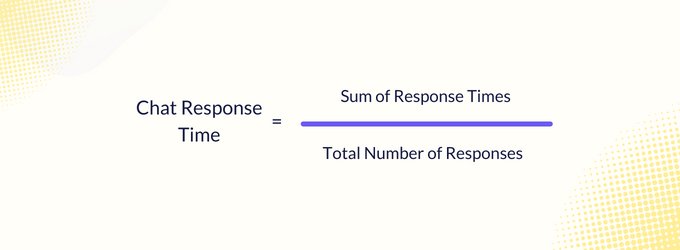
You Might Also Like: 18 Key Customer Service Metrics + How to Use Them
2. Chat Duration
Chat duration refers to the total time a live chat session lasts, from the moment a customer initiates a chat to the moment the chat session is ended or closed by either the customer or the agent.
It provides insights into the length of interactions, which can be an indicator of the complexity of issues being addressed, the efficiency of the support agent, and the thoroughness of the conversation.
How to measure it:
- Record the timestamp when a chat session is initiated by a customer or when an agent picks up the chat. This is the Start Time or S.
- Record the timestamp when the chat session is ended either by the customer or the agent. This is the End Time or E.
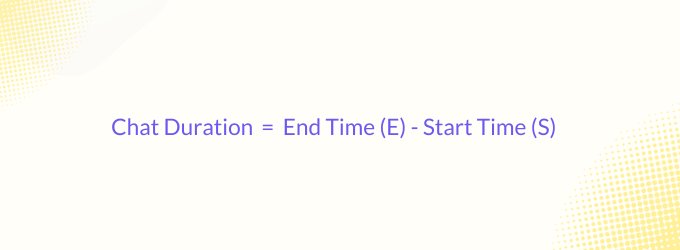
3. First Contact Resolution Rate
First Contact Resolution Rate (FCR) in live chat refers to the percentage of customer issues or inquiries that are resolved on the very first chat interaction, without the need for a follow-up chat or communication.
A high FCR rate is a good sign as it indicates that customers are getting their questions answered swiftly, without being bounced around or having to repeat the same concern.
How to measure it:
- Track the number of chat sessions where the customer’s issue or inquiry was resolved without the need for subsequent interactions related to the same issue. Let’s call this number R.
- Track the total number of chat sessions in the same time period. Let’s call this number T.
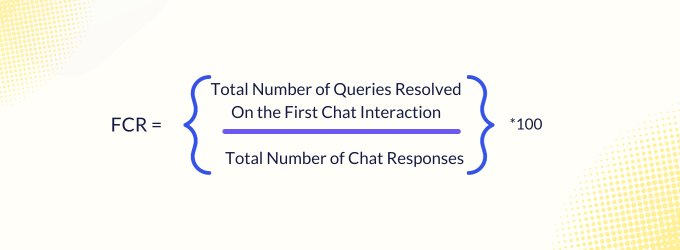
For instance, if you had 80 chats resolved on first contact out of a total of 100 chats, your FCR rate would be:
(80/100) x 100 = 80%
You Might Also Like: 5 Commonly Misinterpreted Customer Service Metrics
4. Active and Missed Chats
Active Chats refer to the ongoing, real-time conversations between a customer and a support agent. It indicates that a customer’s query or concern is currently being addressed.
Measuring active chats involves keeping track of ongoing or live conversations between customers and support agents at any given time.
How to measure it:
- Determine what time frame you consider as “active.” For instance, some businesses might consider a chat to remain “active” if there’s been a message in the last 5 minutes, while others might use a different duration.
- You can also make use of the chat statuses provided by the live chat platform. Chats typically have statuses like “waiting,” “ongoing,” or “ended.” By filtering out just the “ongoing” chats, you can determine the number of active chats.
Missed Chats are chat requests initiated by customers, but did not receive a timely response from the support team. It can also refer to conversations where the customer left the chat.
They can occur for various reasons, such as agents being occupied with other chats, the customer attempting to initiate a chat outside of the support team’s active hours, technical issues, or any other situation where agents were not available to pick up a new chat.
Missed chats can be a point of concern because they represent lost opportunities for engagement or sales. Monitoring the frequency of missed chats can help businesses make necessary adjustments, such as allocating more agents during peak times or extending support hours.
It is also very important to track missed chats and ensure an escalation is made when an agent is unavailable. This is important in ensuring your customers have a frictionless experience.
For instance, Hiver’s Live Chat has a system where customers are notified within the chat app in case no agents are available. This way customers can use another channel like email or phone to raise a ticket or query.
How to measure it:
- Set up notifications/alerts for missed chats. Many live chat systems can send email notifications or other alerts when a chat request goes unanswered.
- You can also track this in your live chat platform. Missed chats usually have a specific status, such as “missed” or “unanswered.” By filtering based on this status, you can determine the number of chats that went unanswered.
5. Feedback Rate
Feedback rate in live chat refers to the percentage of chat sessions where customers provide feedback about their experience, compared to the total number of chat sessions. It’s a crucial metric for businesses because feedback—whether positive or negative—provides insights into agent performance, the effectiveness of the live chat experience, and overall customer satisfaction.
High feedback rates, especially if the feedback is mostly positive, suggest that customers are pleased with the service.
Aside from this, collecting feedback can assist in assessing the performance and training needs of individual chat agents. It can also highlight areas for improvement in the chat experience, agent performance, or even the product or service being discussed.
How to measure it:
- Number of Chats with Feedback: The count of chat sessions where the customer left feedback after the session concluded.
- Total Number of Chats: The total number of chat sessions conducted in a given period.

Now, feedback rate doesn’t necessarily tell you about the quality of feedback. This is where you need a live chat tool like Hiver to help you quantify the customer experience. It can help you understand the volume of chats handled by your team and view the cumulative CSAT scores from your website visitors, and incorporate their feedback proactively.
You Might Also Like: Customer Feedback Guide: How to Collect and What to Do With It
6. Chat Abandonment Rate
Chat abandonment rate in live chat refers to the percentage of chat sessions initiated by customers but are abandoned before they are connected to a live agent or before the interaction reaches a resolution. In essence, it’s when a customer starts a chat session but leaves before getting the assistance they sought.
The chat abandonment rate is a vital metric for businesses using live chat support, as it can provide insights into several areas:
- Customer Experience: A high abandonment rate may indicate that customers are not having a positive experience. This could be due to long wait times, technical issues, or other factors.
- Operational Efficiency: The metric can indicate if there’s a need for more agents during specific times or if there are training and resource gaps in the current team.
- Potential Business Impact: Each abandoned chat may represent missed opportunities, either in sales, upsells, or improving customer satisfaction.
How to measure it:
- Measure the number of chats where a customer left before getting connected to an agent or reaching a resolution.
- Measure the total number of chats that customers started.
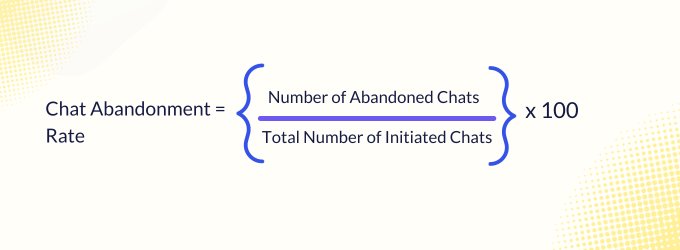
7. Agent Utilization Rate
Agent utilization rate is a live chat metric that refers to the percentage of time that a live chat agent spends actively assisting customers compared to their total available working time. It’s a measure of how efficiently resources (in this case, support agents) are being used to handle this customer communication channel.
A higher agent utilization rate means agents are spending most of their time assisting customers, while a lower rate could indicate periods of inactivity or underutilization.
Significance of Agent Utilization Rate in Live Chat:
- Operational Efficiency: A high utilization rate might indicate that agents are constantly busy, which could be good for efficiency but may also risk agent burnout. A very low rate, on the other hand, might indicate that there are too many agents for the volume of chats coming in.
- Cost Management: Understanding utilization rates can help businesses allocate resources effectively, ensuring that they are not overstaffing or understaffing their live chat communication channel.
- Quality Assurance: While a high utilization rate means agents are engaged, it’s essential to balance it with quality service. If agents are too busy, the quality of service might decline, leading to decreased customer satisfaction.
- Capacity Planning: This metric can help businesses predict the need for hiring more agents or redistributing incoming workload based on chat volumes and agent availability.
How to measure it:
- Active Chat Time: This is the total time an agent spends in active chat sessions, handling customer inquiries.
- Total Working Time: This is the total time an agent is logged in and available for chat, including both active chat time and idle/waiting time.
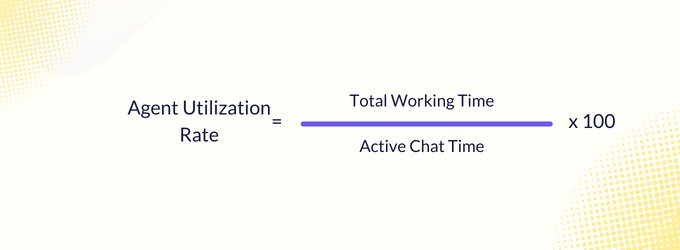
You Might Also Like: How to Reduce Agent Effort in Customer Service
8. Queue Wait Time
Queue wait time, often referred to as “average wait time,” is a metric used in customer support (including live chat) to measure the average time a customer spends waiting in a queue before they are connected to a support agent or representative. It provides insights into the efficiency of a support system and directly impacts customer satisfaction.
Measuring queue wait time is important because it has a marked impact on:
- Customer Satisfaction: Prolonged waiting times can lead to customer frustration and dissatisfaction. Ensuring quick response times is crucial for maintaining a positive customer experience.
- Operational Efficiency: The metric can indicate if a support team is understaffed or if there are peak times where more agents are needed.
- First Impressions: Especially for new customers or users, the time they spend waiting for support can shape their first impression of a brand or service.
How to measure it:
- Measure the individual wait times for customers by subtracting the time from when the chat was initiated to the time when an agent responds to the chat
- Add up all the individual wait times for a given period (ex. a day, a week, or a month)
- Divide this number by the total number of chat sessions in that period
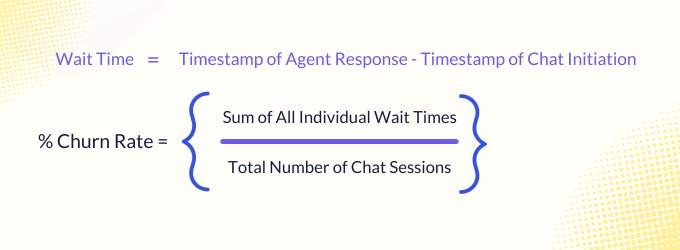
9. Conversion Rate
Conversion rates in live chat refer to the percentage of chat interactions that lead to a desired outcome or action, typically resulting in some form of business value. The specific “conversion” can vary based on the business’s goals and the nature of the live chat’s purpose.
Here’s are some of the different types of conversions:
- Sales Conversions: For e-commerce websites or online retailers, a conversion might mean a completed purchase resulting directly from a chat interaction.
In fact, Hiver’s Live Chat has an ‘Email Capture’ feature that allows your sales team to capture a lead’s contact information before the start of every conversation. This is important in engaging leads that may have dropped off otherwise.
- Lead Generation: For businesses aiming to generate leads, a conversion could be the collection of contact information or scheduling a follow-up call or appointment.
- Support Resolution: For support-focused chats, a conversion could mean successfully resolving a user’s query or issue during the chat.
- Sign-ups or Account Creation: For platforms offering membership or services, a conversion might mean a user signing up or creating an account after a chat interaction.
- Engagement or Content Promotion: For informational or content-rich sites, a conversion could mean directing a user to a particular piece of content or getting them to download a resource.
Monitoring live chat conversion rates helps businesses understand the effectiveness of their chat interactions. If conversion rates are high, it indicates that chat agents are effectively assisting users towards desired actions. If conversion rates are low, there might be room for improvement in the chat workflows or the scripts that agents use.
Regularly monitoring and working to improve these rates can greatly enhance the return on investment (ROI) of a live chat system.
How to measure it:
- Define what constitutes a “conversion” for your business within the context of live chat. It could be a sale, a sign-up, or simply a support ticket resolution.
- Track the number of successful conversions that result directly from chat interactions within a specific period.
- Collect data on the total number of chat sessions that occurred in the same period.
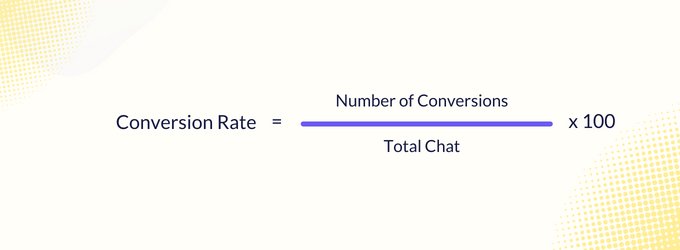
10. Peak Chat Time
Peak chat time is one of the live chat performance metrics that refers to specific periods when the volume of chat requests from customers is significantly higher than usual. These periods can vary based on the nature of the business, customer demographics, operating hours, and other factors.
Measuring peak chat time can help you track:
- Increased Volume: During peak chat time, the number of incoming chat requests often surpasses the average volume, leading to busier agents and potentially longer wait times for customers.
- Operational Challenges: Without adequate preparation or anticipation, peak chat times can strain resources and frustrate customers, due to longer response times or unattended chat requests.
- Opportunity for Engagement: Peak chat times can also represent an opportunity. High traffic might mean more potential customers or users needing assistance, leading to increased conversions (depending on how you define what a conversion is for your business) if managed correctly.
- Insights on Staffing: By identifying and understanding peak chat times, businesses can allocate and schedule resources effectively, ensuring that more agents are available during high-demand periods.
How to measure it:
- Historical Data: Look at past data to identify trends. For example, if every Monday morning sees a surge in chat requests, that’s a recurring peak chat time.
- External Factors: Consider external factors that might influence chat volume. For instance, if you run an online sale or a marketing campaign, you might experience higher chat volumes during that period.
- Time Zones and Global Audience: For businesses serving a global clientele, peak times can vary based on time zones and regional differences.
- Feedback from Agents: Agents can provide qualitative insights about busy periods, especially if they feel constantly overwhelmed or notice a rush of chat requests at specific times.
Wrapping Up
Live chat metrics are important KPIs that offer insights into customer experiences, agent performance, and operational efficiency. As businesses continue to prioritize real-time customer engagement in an increasingly digital world, understanding and leveraging these metrics becomes crucial.

































